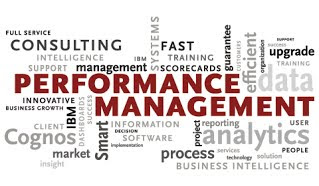Employee performance management
Introduction
Performance management is a process of ensuring that set of
activities and outputs meets an organization's goals in an effective and
efficient manner. Performance management can focus on the performance of an organization, a department, an employee, or the processes in place to manage
particular tasks (Wikipedia)
The History of Employee Performance Management
According to peoplestreme.com, Productivity management began
about 60 years ago as a source of revenue justification and was used to
determine employee salaries based on performance. The gap between the rationale
for payment and the development of skills and knowledge has become a big
problem when using Performance Management. This became apparent in the late1980s; the realization that managing and promoting efficiency requires a more
integrated approach. This performance management approach was developed in the
United Kingdom and the United States much earlier than in Australia.
Benefits of performance management
Managing the
performance of employees or the system and coordinating their goals contributes
to the effective implementation of strategic and operational goals. Some
proponents argue that there is a clear and direct link between using
performance management programs or software and improved business and
organization results.
- Direct financial gain (Reduce costs in the organization, Grow sales, Aligns the organization directly behind the CEO's goals)
- Motivated workforce (Optimizes incentive plans to specific goals for over achievement, Create transparency in the achievement of goals, Professional development programs are better aligned directly to achieving business level goals)
- Improved management control (Flexible, responsive to management needs, Helps audit, Displays data relationships)
Difference between performance management & performance appraisal (talentmanagement360.com)
Table: Difference
between performance appraisal & performance management
|
Performance appraisal |
Performance
management |
|
Operational |
Strategic |
|
Top-down
assessment |
More
likely to involve dialog |
|
Retrospective
for corrections |
Future-oriented
for growth |
|
Typically,
once or twice per year |
Ongoing
or continuous review, interspersed with formal reviews |
|
Often
uses ratings or rankings |
Less
likely to involve ratings |
|
Rigid
structure/system |
Flexible
process |
|
Not
linked to business needs |
Linked
to business needs |
|
Usually
takes a quantitative approach |
Combines
quantitative and qualitative approaches |
|
Individual |
Collective |
|
Often
linked to compensation |
Not
usually linked to compensation |
|
Often
very bureaucratic with a focus on paperwork/documents |
Less
concerned with documentation |
|
Usually
housed in the HR department |
Conducted
by managers and supervisors |
Performance management in Nestle
The HR team of Nestle is considered as a benchmark in terms of recruiting processes. The company helps the employee in improving their skills, attitudes, and behavior as well as decreasing the labor work rate. As Nestle provides the freedom to ask questions. This also facilitates honest, transparent coaching, feedback and recognition, and supports employees’ development, motivation and engagement within an organization (Nestle in Society, Creating shared value 2017).
Conclusions
Evaluation of effectiveness is not just a process of
evaluating a person with an award/award as a consequence of this. Instead, it
aims to align and improve personality indicators to achieve the overall goal of
the business.
References
- https://en.wikipedia.org/wiki/Performance_management
- Adeline Decramer, Carina Smolders, Alex Vanderstreten, 2013. Employee performance management culture and system features in higher education: relationship with employee performance management satisfaction. P352-371
- https://www.peoplestreme.com/what-is-performance-management#:~:text=Employee%20Performance%20Management%20is%20an,achieved%20at%20an%20organisational%20level.
- https://sourceessay.com/performance-management-report-nestleuk/
- https://talentmanagement360.com/the-difference-between-performance-management-and-performance-appraisal/#:~:text=Performance%20management%20is%20the%20process,process%20of%20evaluating%20employee%20performance.




Very informative article nimesh.
ReplyDeleteAccording to my point of view, in order to keep the Organization on the track, it is necessary to move on with emerging trends in performance Management such as "Continuous Performance Management" and “Artificial Intelligence ” in order to avoid injustice in evaluating the performance of the employee.
Organizations should make sure to convert performance evaluation discussions to action and it is mandatory requirement of any organizations to keep the employees inspired to keep them on the track.
Well constructed article.As I know we can not use Wikipedia as reference. please check it and amend if necessary. Good article.Good Luck .
ReplyDelete